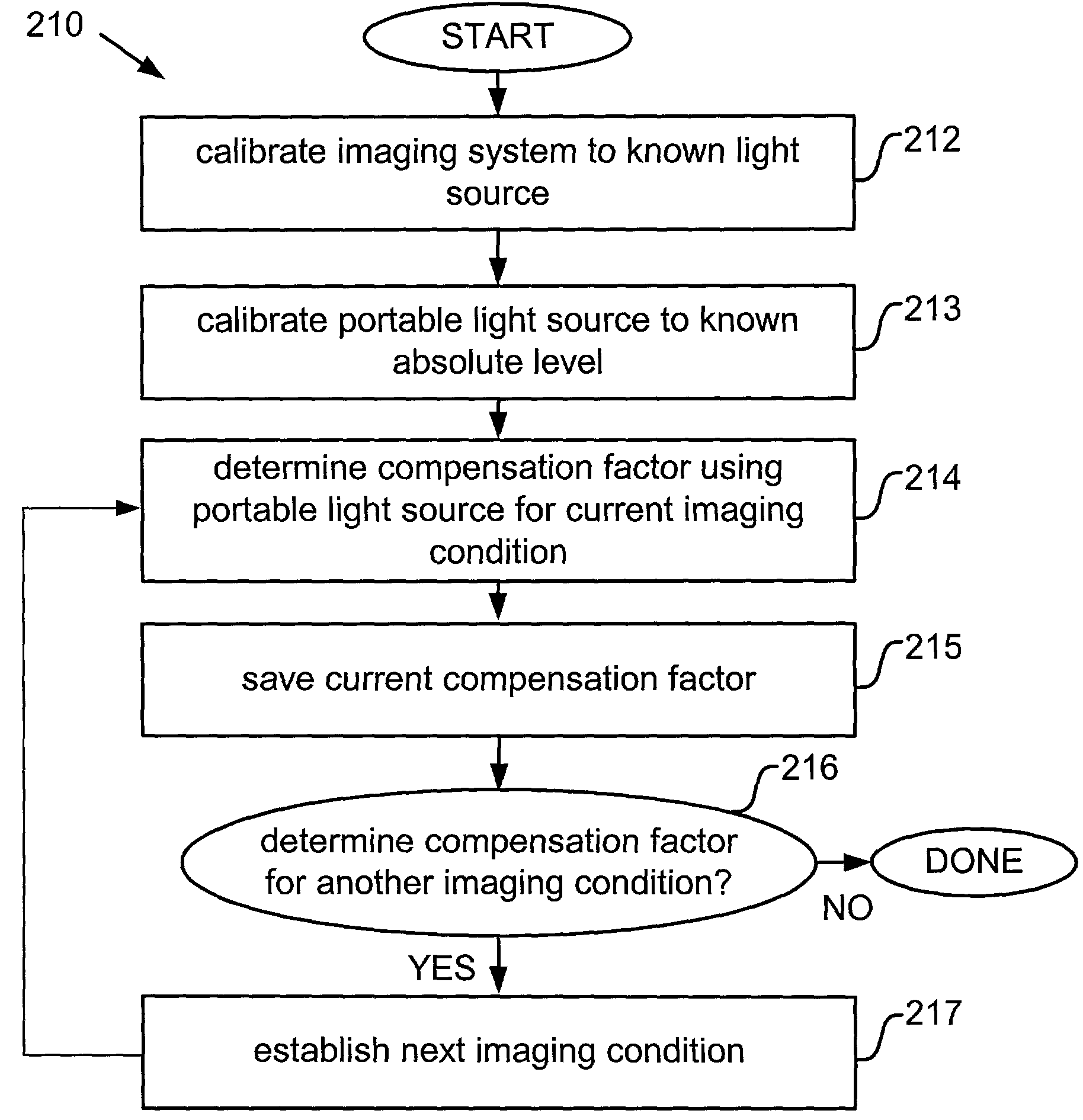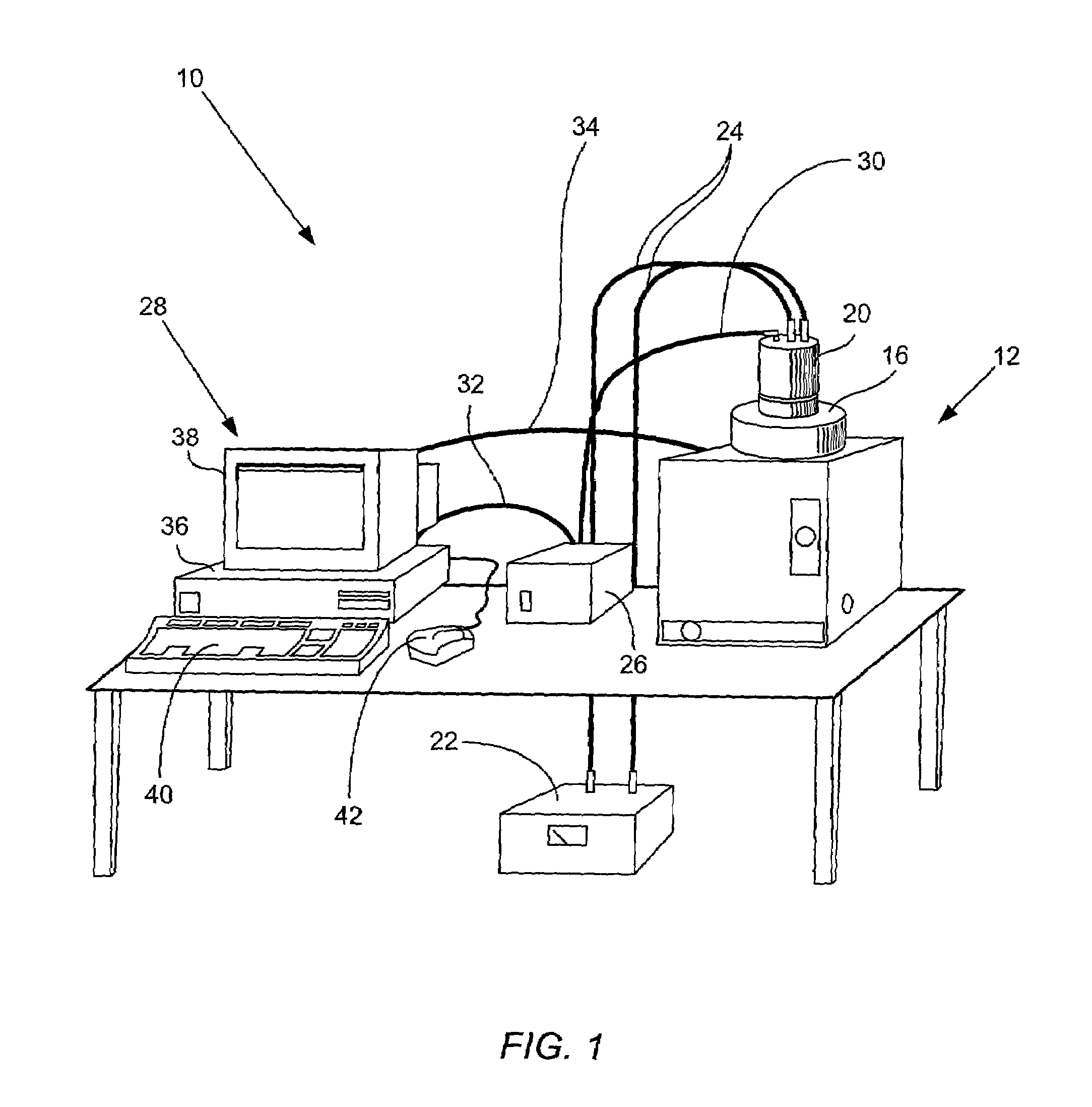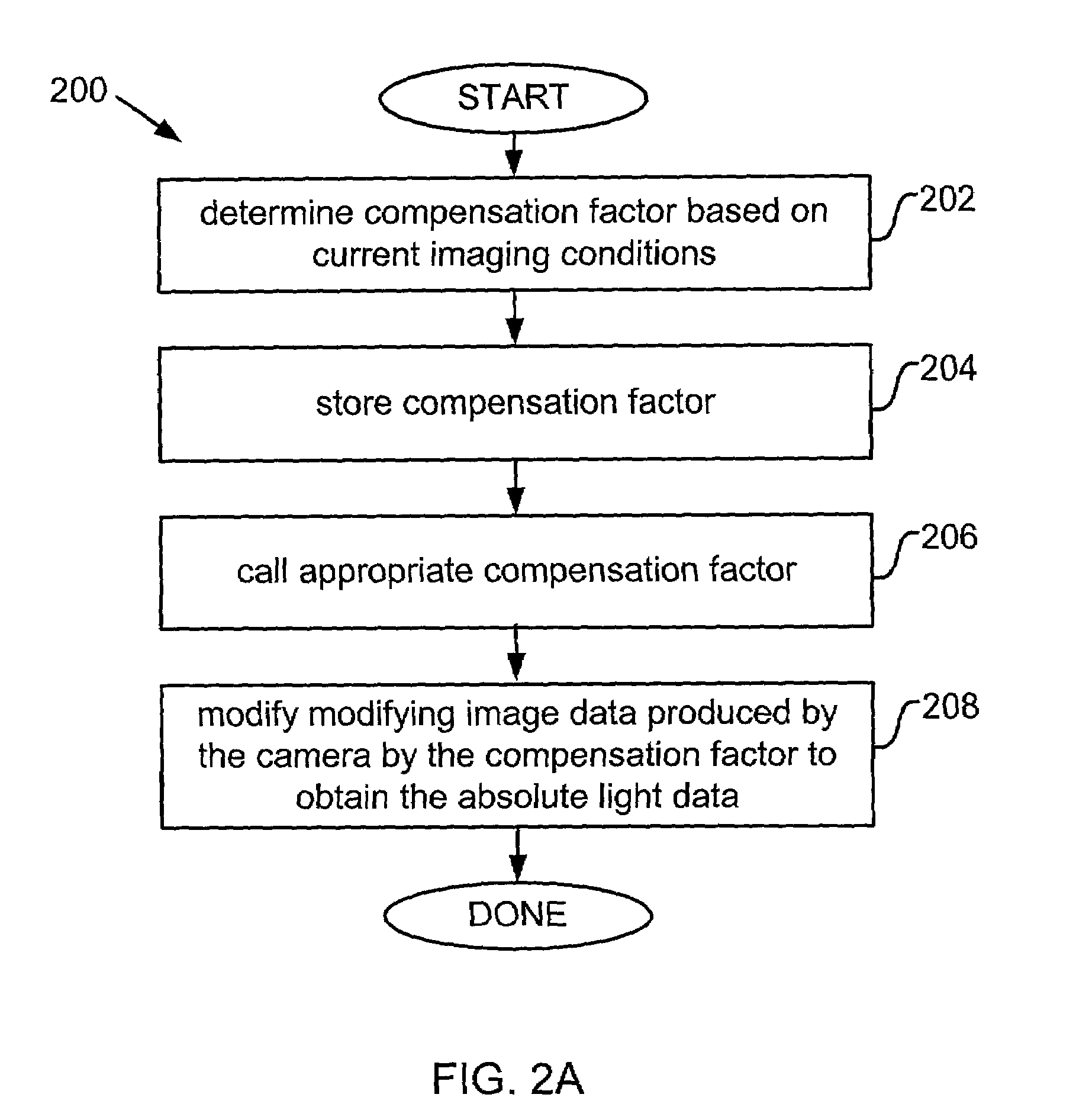Absolute intensity determination for a light source in low level light imaging systems
a technology of light source and absolute intensity, applied in the field of imaging, can solve the problems of imaging data, imaging system not currently available, and different camera designs may affect data output, so as to achieve the effect of assessing the accuracy of the imaging system and its absolute imaging characteristics
- Summary
- Abstract
- Description
- Claims
- Application Information
AI Technical Summary
Benefits of technology
Problems solved by technology
Method used
Image
Examples
Embodiment Construction
[0026]In the following detailed description of the present invention, numerous specific embodiments are set forth in order to provide a thorough understanding of the invention. However, as will be apparent to those skilled in the art, the present invention may be practiced without these specific details or by using alternate elements or processes. In other instances well known processes, components, and designs have not been described in detail so as not to unnecessarily obscure aspects of the present invention.
I. Overview
[0027]The present invention converts “relative” units produced by a camera to “absolute” physical units. A distinction between “absolute” physical units and “relative” units as discussed herein is that absolute units refer to light emission data from the source or sample itself, as opposed to counts which refers to light emission incident on a detector—or another relative camera data unit output from a camera component. Regardless of imaging conditions, measurement...
PUM
| Property | Measurement | Unit |
|---|---|---|
| solid angle | aaaaa | aaaaa |
| constant wavelength | aaaaa | aaaaa |
| light wavelength | aaaaa | aaaaa |
Abstract
Description
Claims
Application Information
 Login to View More
Login to View More - R&D
- Intellectual Property
- Life Sciences
- Materials
- Tech Scout
- Unparalleled Data Quality
- Higher Quality Content
- 60% Fewer Hallucinations
Browse by: Latest US Patents, China's latest patents, Technical Efficacy Thesaurus, Application Domain, Technology Topic, Popular Technical Reports.
© 2025 PatSnap. All rights reserved.Legal|Privacy policy|Modern Slavery Act Transparency Statement|Sitemap|About US| Contact US: help@patsnap.com



